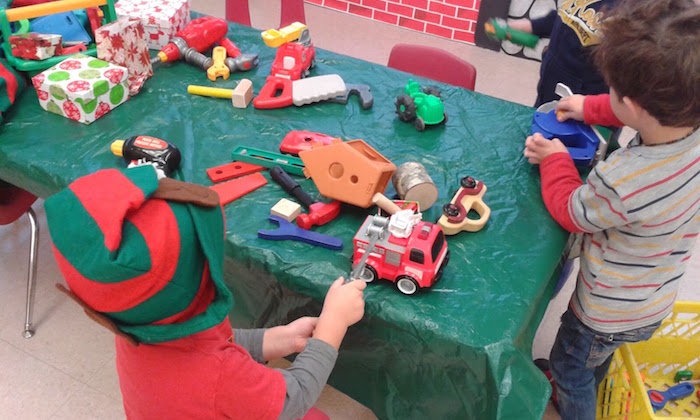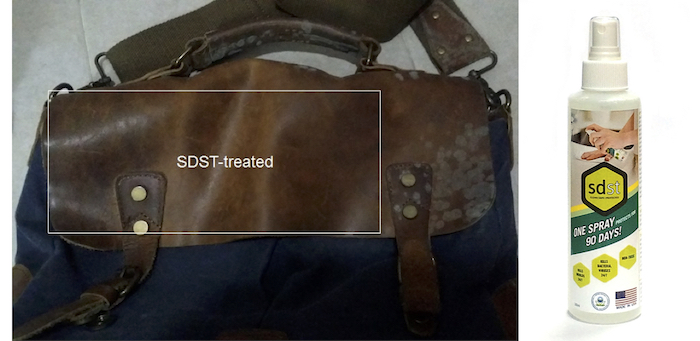
We speak with a leading expert in the fight against Hand, Foot and Mouth Disease to get top cleaning and disinfection tips to keep your family safe

Chances are if you’ve got a preschooler at home you’ve dealt with Hand, Foot and Mouth Disease (HFMD) – if you haven’t, count your blessings, mama! While there’s not much at all that can be done to actually treat HFMD (other than wait it out), there is new research on how to prevent it. We sat down with Singaporean microbiologist Dr. Yeo Wee Ming to find out about recent advancements in the field – you do not want to miss his tips, mama!
A few weeks ago we attended the International Hand, Foot and Mouth Disease Conference 2016 (we really do aim to cover all aspects of parenting in Singapore!), where we had a chance to listen to Dr. Yeo give a talk entitled “Effective Ways to Prevent a HFMD Outbreak”.
Having received his Ph.D. from the department of microbiology at National University of Singapore, much of his research has covered bacteria, viruses and fungi. Today he focuses on microbes and developing anti-microbial products – he has two patents filed under his name, including the anti-microbial spray SDST, that keeps surfaces and items like toys and mobile phones clean and germ-free for months at a time (as opposed to just days or even hours with traditional cleaning products).
Much of Dr. Yeo’s talk focused on cleaning strategies (for instance, most people clean surfaces in a circular motion, but this is a lot less effective than methodically cleaning in straight lines – of course that’s also a lot more labor-intensive). He also talked about striking a balance between effective products and products that are safe and not filled with dangerous or harmful chemicals.

There’s been a huge increase in cases of HFMD in Singapore from 2015-2016, why do you think that is?
It’s hard to say for sure, it could be that there’s been a subtle change in the virus. Or people are simply not cleaning the right way, or perhaps they’re using el cheapo disinfectants that don’t include effective ingredients. (For instance, handwipes from the drugstore often don’t include alcohol – the most effective disinfectant for humans).
There’s also been speculation that parents are simply sending their kids to school even when they’re sick or showing symptoms. In addition to good hygiene practices, it’s crucial to keep kids away from school (or the pool, or the playground) until they’ve been cleared by a doctor.
What are the most important preventative measures we can take at home to avoid HFMD?
- Wash hands – thoroughly! Technically the most effective contact time for washing hands to truly disinfect and sanitize is to have them remain wet for a full 10 minutes, but that’s not realistic, particularly with children. Start by aiming for a solid 60 seconds of thoroughly washing each finger before meals and after using the toilet, and go from there.
- Don’t share utensils, particularly with a child coming home from school or childcare.
- Step up cleaning in the house: if someone’s been infected with HFMD, thoroughly clean and disinfect surfaces, toys and clothes. Bleach and anti-bacterial soap are both very effective cleaning agents, but read labels very carefully and make sure you follow dilution instructions properly, as miscalculation can make cleaning products a lot less effective.
- When cleaning, don’t forget about ‘high traffic’ areas like door handles and faucet taps – handwashing can actually be rendered ineffective if you turn off the water and touch a handle covered in germs! When cleaning the toilet bowl, let the cleaning agent sit for a full 5 minutes before rinsing.

Why is it so important to keep surfaces clean when dealing with HFMD?
HFMD microorganisms can survive days to weeks (compared to just a few hours for viruses like SARS or Rotovirus). Therefore it’s important to remember proper cleaning technique: spray a surface, keep it wet for a few minutes to let the penetrative agents of the liquid do their job, and then wipe methodically (Spray…and wipe, and wipe, and wipe).
What are your tips for dealing with toys after a child’s contracted HFMD?
I’ve gone into childcare classrooms with over 1,000 toys – it’s close to impossible to stay on top of keeping all of them clean, particularly soft toys. It’s a strong argument for having a limited number of toys in a classroom, and the same sentiment goes for in the home. Plastic and wooden toys can also be easier to keep clean than soft toys.
What are key ingredients to look for in cleaning products?
Look for Quartenary Ammonium Hypochloride, or Sodium Hypochlroide (bleach), but again be mindful of dilution and at the same time, remember that a product can be dangerous if it’s too strong.
Rubbing alcohol is actually the most effective disinfectant on human skin. The problem is it’s dehydrating, but it evaporates quickly without residue.

You’ve done a lot of research into surface sprays and have developed a product that’s highly effective in fighting off germs like HFMD. Is it safe?
Yes! One application of SDST and SD Pro can last for up to six months of effectiveness. They use proprietary silane technology that neutralises microbes that come into contact with treated surfaces. It’s much less harsh and harmful than the chemicals in bleach, for instance; the ingredients are approved by both the Environmental Protection Agency (EPA) in the United States and the National Environmental Agency (NEA) in Singapore.
The sprays can actually be applied to any surface, including glass, leather bags, or fabric (including sofa cushions, soft toys, etc.). It doesn’t just kill virus bacteria, it also fights off mould.
Thank you, Dr. Yeo! SDST is available for purchase from Watson’s Online, with orders available for delivery or in-store pick-up.






 View All
View All





 View All
View All










 View All
View All










